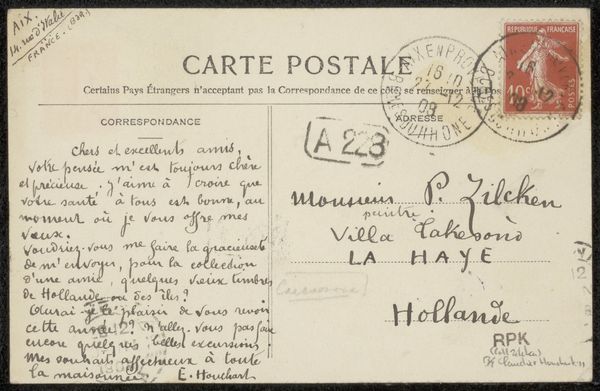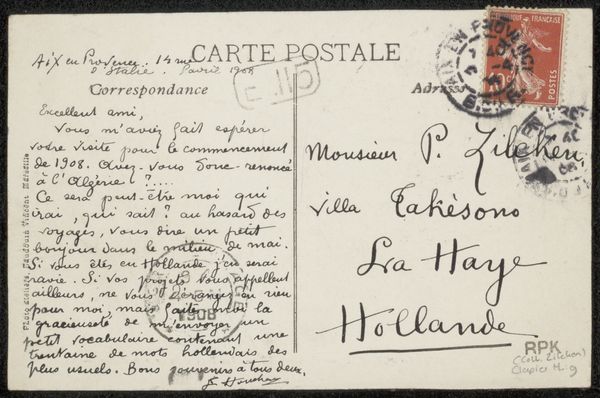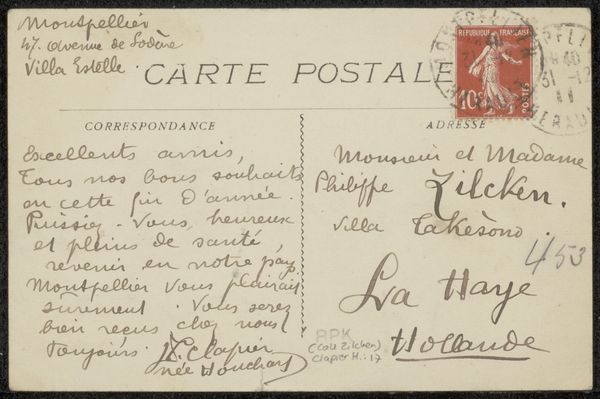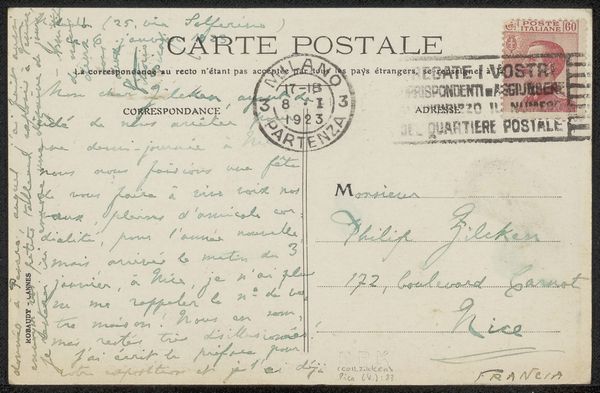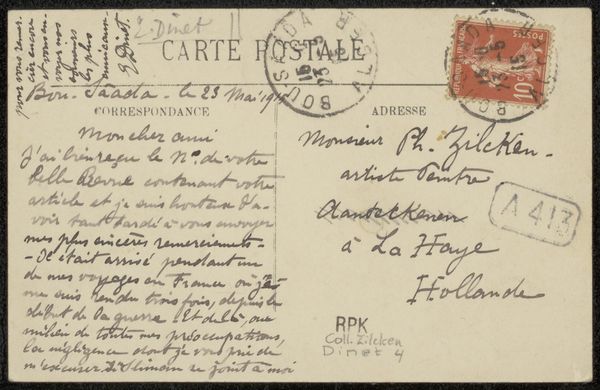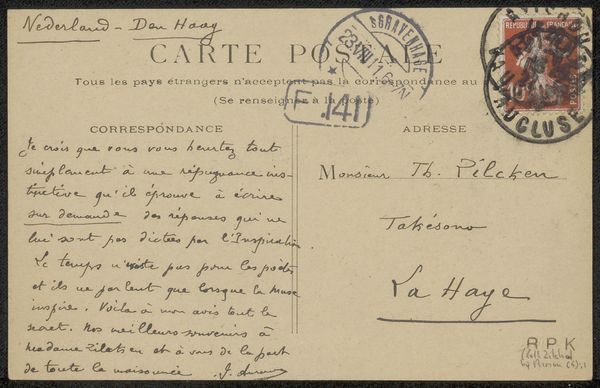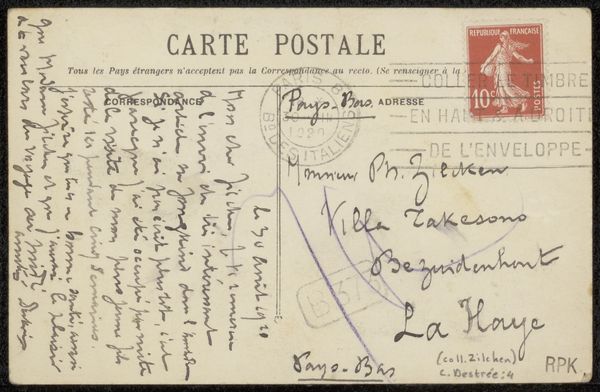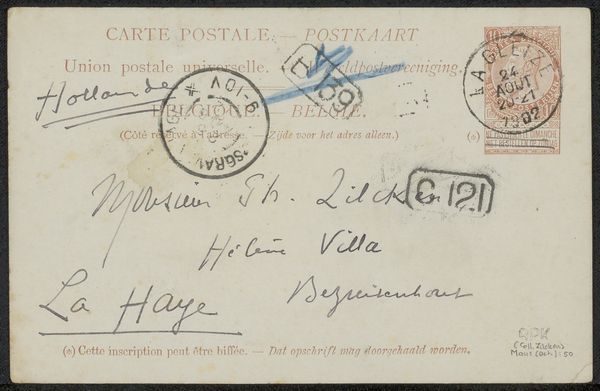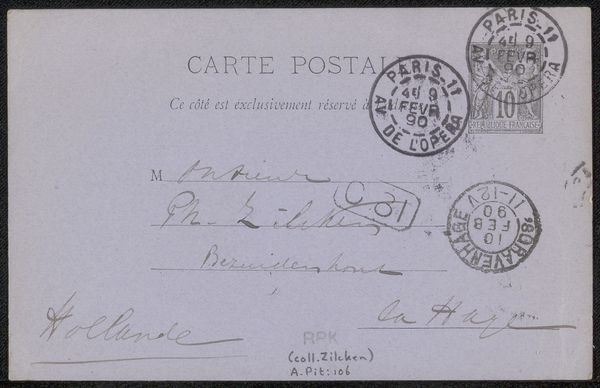
mixed-media, paper, photography, ink, pen
#
mixed-media
#
hand drawn type
#
paper
#
photography
#
ink
#
pen-ink sketch
#
pen work
#
sketchbook drawing
#
pen
#
calligraphy
Copyright: Rijks Museum: Open Domain
Curator: This mixed-media artwork, before 1906, is a postcard addressed to Philip Zilcken. It is by Eugénie Clapier-Houchart. My initial reaction is one of delicate charm; the calligraphic script dances across the surface. Editor: I'm struck by the directness of the artifact; the ink on paper, a blend of text and postal markings. You feel its journey. The means of sending a message physically in that era and the layered marks it has from stamps and markings. Curator: Exactly! The postal markings are significant. They speak of the infrastructural networks that facilitated the circulation of art and ideas in the early 20th century. Look at the Avignon postmark—a marker of regional identity being broadcast. Editor: Absolutely. And think about the penmanship. It's not just information; it's labor. The writer is meticulously forming each letter, enacting a form of social performance. It’s beautiful handwriting. Curator: It reveals the personal touch so common then and reminds us of a time before instantaneous communication. Editor: This handwritten message holds social significance too, right? We could research what it meant to correspond in such an ornate, performative manner and whether it was typical for its time. Curator: That's a compelling angle. We can contextualize the practice of letter-writing in relation to societal norms, power dynamics, and artistic circles of the time. What was the expectation of this handwritten note, the reception it got, and the role in artistic networks? Editor: For me, thinking of the recipient makes this interesting, what impact this physical letter may have had for them, and the physical act of someone handling this in their hands. Curator: Thinking about the tangible artifact – we must remember how material culture informs social history. What this artifact reveals is an immediate dialogue. Editor: This close examination underlines a lot of the complexities within something that first appears to be just a casual correspondence. Curator: Indeed. What seemed simple now shows us social narratives when materiality and historical context work in concert.
Comments
No comments
Be the first to comment and join the conversation on the ultimate creative platform.
